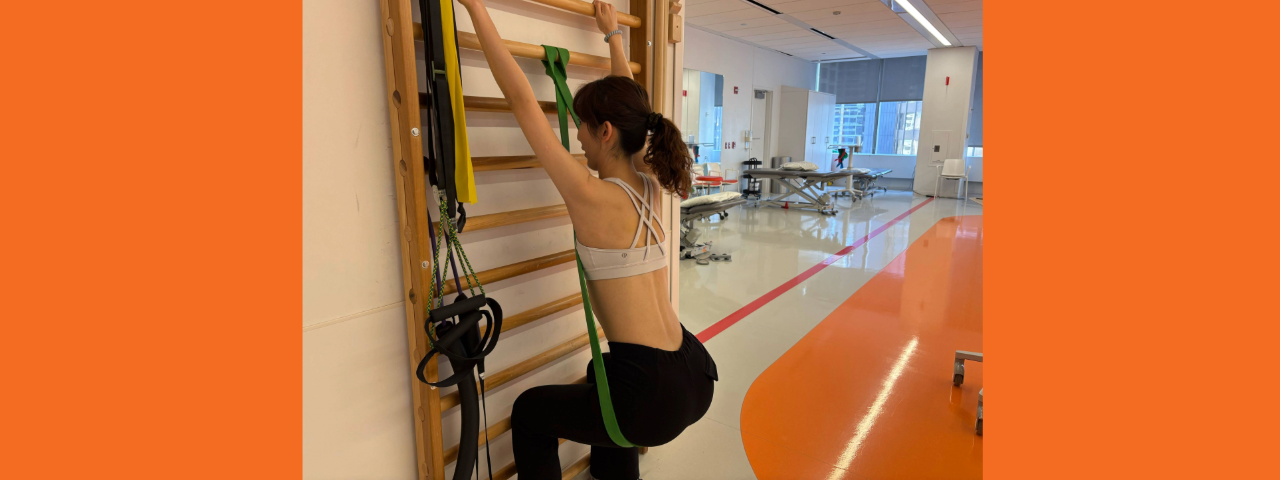Body
Organized sports offer kids a way to stay active and gain skills, connect with coaches and fellow athletes and, hopefully, experience the thrill of victory. While celebrating these benefits, Shirley Ryan AbilityLab’s Hollis Bell, MD, also encourages parents and athletes to be “concussion aware” for safe participation in sports.
Dr. Bell is an attending physician with Shirley Ryan AbilityLab’s Brain Innovation Center and also leads the hospital’s Concussion Clinic. In the following Q&A, she explains the risks, signs and symptoms of a concussion — and how treatment can help teenagers recover and return to school and sports.
What exactly is a concussion?
Body
A concussion is a mild form of traumatic brain injury (TBI) caused by a bump, blow or jolt to the head. After a concussion, brain cells don’t function properly due to a metabolic change. This creates an “energy mismatch” in which brain cells struggle to function normally, creating an inability or reduced ability to generate normal electrical signals in the brain.
Most people with concussions recover quickly. Although some symptoms may be prolonged, a concussion typically does not lead to permanent damage to brain cells or a person’s function.
It’s important to recognize the signs and symptoms of a concussion and to get evaluated by a specialist to ensure the best outcome.
What are some of the most common causes of concussions in adolescents?
Body
Common causes of concussions in adolescents include falls, all-terrain vehicle (ATV) and bicycle accidents, and, of course, sports.
Concussions can be serious in young people because the brain is still developing, and playing sports from a young age puts kids at a higher risk for concussions throughout the years — and the cumulative impact of multiple concussions.
Tackle football accounts for 63% of concussions in high school boys, with lacrosse, ice hockey and wrestling also accounting for higher rates of concussions. For girls, soccer — and specifically heading the ball — poses risks because girls’ necks are less strong as they develop. Lacrosse, field hockey, basketball and cheerleading are among other sports that pose risk for concussions in girls.
No matter the sport, we encourage parents to be “concussion aware” — understanding the risks and ensuring sport-specific concussion protocols are in place.
What signs or symptoms should parents watch for if they suspect their teen has had a concussion?
Body
Concussion symptoms may appear right away, while others may go unnoticed for hours or days after the injury. Parents should watch for changes in function, including balance, behavior, thinking skills and emotions. More specifically:
- Physical changes: Balance problems, dizziness, headaches, neck pain, fatigue or sleep disturbance.
- Mood changes: Depression, anxiety or irritability.
- Cognitive changes: Short-term memory problems, slowed thinking, confusion or difficulty concentrating and/or multi-tasking.
- Vision changes: Eye strain, double vision and/or visual fatigue with screen time or reading.
What should parents do if they think their teenager has had a concussion?
Body
Pediatricians have become more aware of diagnosing concussions in recent years, so usually parents can start with an appointment there if they notice possible concussion symptoms in their child.
However, they should go to urgent care or an emergency room if any of the following occur: loss of consciousness, vomiting, severe headache, visible scalp deformities or worsening of any of the initial symptoms. These could indicate a more significant brain injury.
How do you treat concussions at Shirley Ryan AbilityLab’s Concussion Clinic?
Body
We see adolescent and adult patients with serious concussions in our clinic. We first test to see if a more serious brain injury has occurred, with evaluations led by one of our board-certified physicians with expertise in brain injury medicine. Then, based on symptoms, we will schedule evaluations with concussion specialists on our team, including physical therapists, occupational therapists, speech-language pathologists and/or psychologists.
Our goal is to quickly resolve or minimize concussion symptoms so our patients can return to and fully participate in activities that are important to them. For teenagers, that may include returning to the pace and academic intensity of school, getting back to playing sports or working at a job.
We also support teens and families to reduce emotional distress around missed school days or temporarily stepping away from sports, and we can assist in the documentation needed to support temporary school accommodations. Some kids can develop anxiety about having another concussion or more serious brain injury and then avoid certain activities, which impairs their social, emotional and psychological development.
What are your top three tips for parents with teenagers who are active in sports or other recreational activities?
Body
- Ensure concussion protocols are followed in team sports: Coaches should demonstrate awareness about the risk of concussions; have proactive, preventive procedures in place; and be willing to follow the rules — focusing on the long-term health of the athletes and not the short-term success of the team or season.
- Allow for full recovery before returning to sports: If a child has a second concussion before they have recovered from the first, it can be catastrophic. Parents should ensure a doctor has cleared their child to return to sports and that there is no risk of a more serious brain injury.
- Wear helmets. Helmets are critical — whether it’s wearing a football helmet or other proper headgear in an organized sport or wearing a helmet for recreational activities like biking, riding ATVs, skiing or snowboarding. People should not use old or outdated helmets as helmet technology is always improving, and should stop using a helmet that is broken, cracked or damaged as it will no longer be safe for use.

